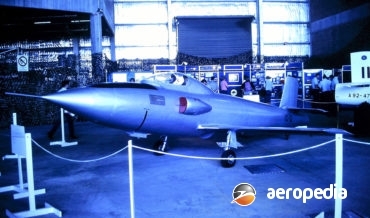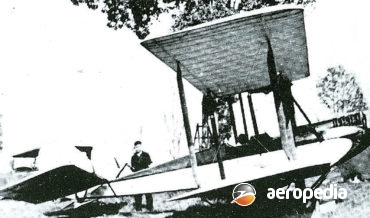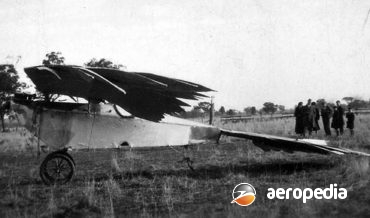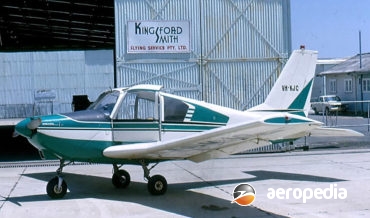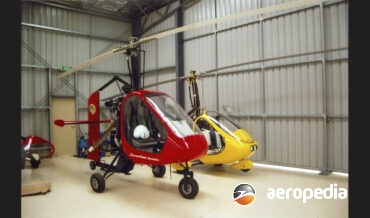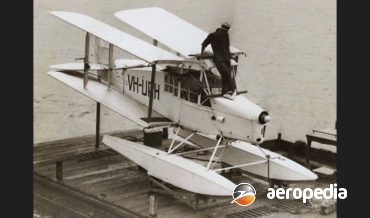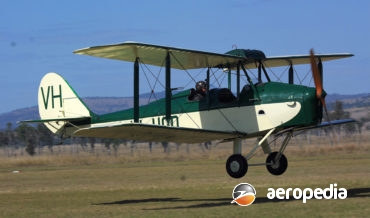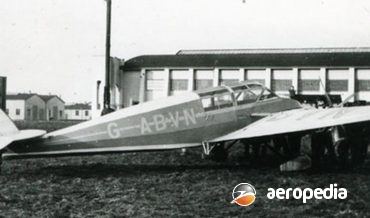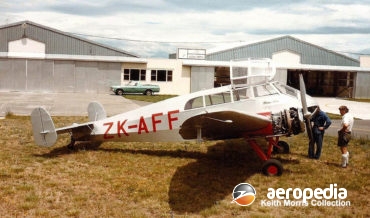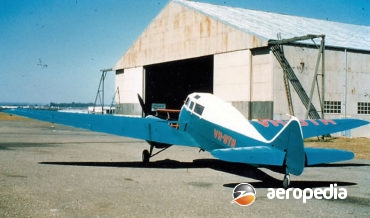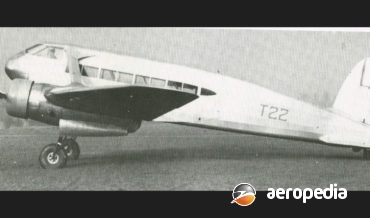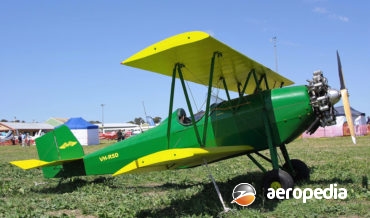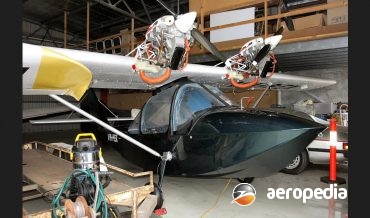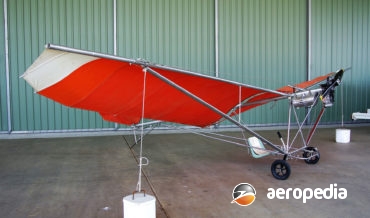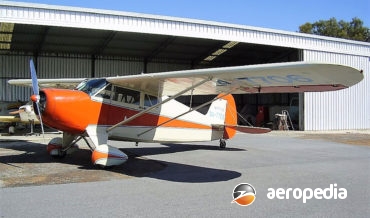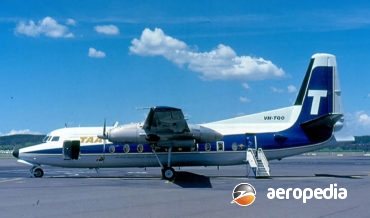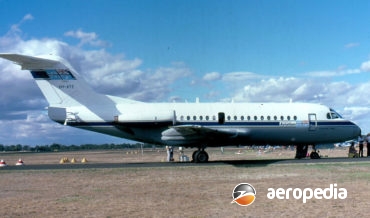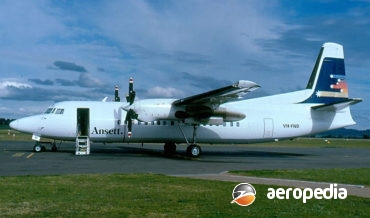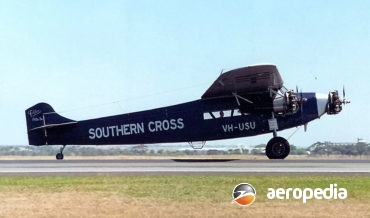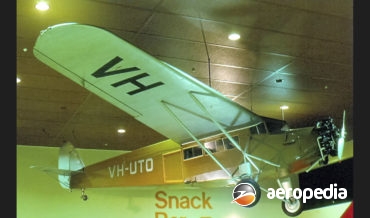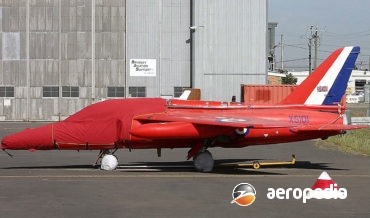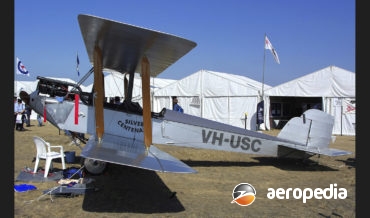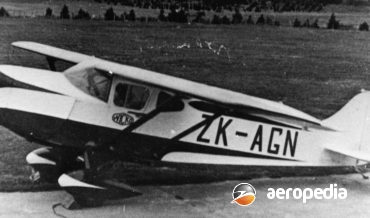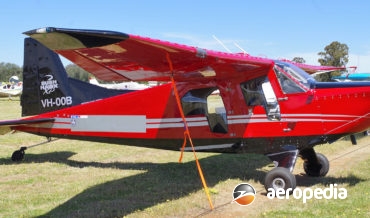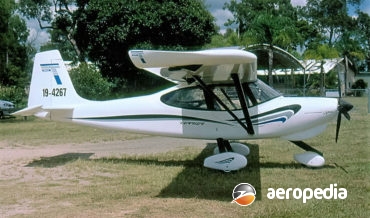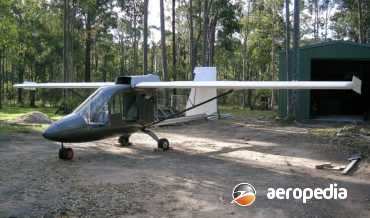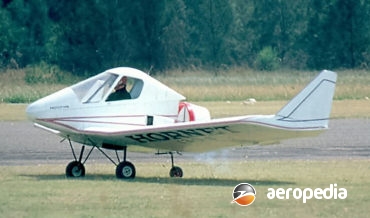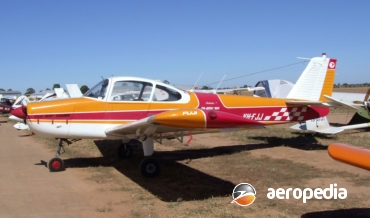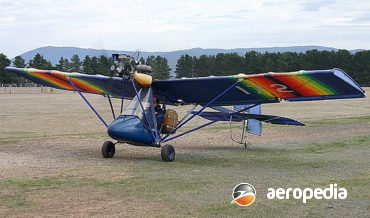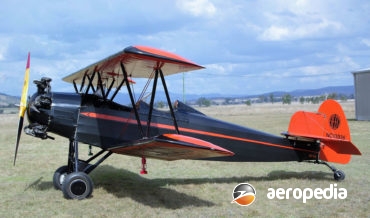David C. Eyre
In January 1976 the N-24 variants of the Nomad, with a 61-cm (24-in) increased length in the nose, and a 1.14-m (45-in) increase in cabin length, flew for the first time.
David C. Eyre
- May 8, 2019
In March 1948, following a series of meetings between members of the British Ministry of Supply and the Australian Department of Supply and Development, a specification was issued to cover the design and manufacture of a small high-speed pilotless aircraft for use in the guided weapon development program.
David C. Eyre
- May 8, 2019
In about 1930 in Western Australia Mr E (Ted) Galway, who described himself as a Canadian, designed and built a biplane with wings which could be pivoted on a spanwise line to permit the incidence to the wing to be varied in flight with the additional and important characteristic that
David C. Eyre
- May 8, 2019
This machine was built by David Gash of Balaclava, VIC commencing in the 1920s using wings designed to represent the wings of a bird. Construction commenced in about 1929 after he obtained the wreck of a Curtiss JN-4 Jenny which had crashed at Essendon.
David C. Eyre
- May 8, 2019
Yves Gardan, the designer of the Horizon series of light monoplanes, was well known in France as the designer of the CAB Minicab, Supercab, and other aircraft.
David C. Eyre
- May 8, 2019
The Sparrowhawk is a two-seat gyrocopter designed and developed by Groen Brothers Aviation and built, initially, and marketed by a subsidiary of that company, American Autogyro at a facility in Salt Lake City, Utah.
David C. Eyre
- May 8, 2019
In about May of 1970 it was announced to the press that negotiations had been in progress for sometime in relation to the possibility that the American-designed 36-40 seat GAC-100 feeder liner, powered by United Aircraft of Canada PT-6 turboprop engines, would be almost entirely built and assembled in Australia
David C. Eyre
- May 8, 2019
As noted in the Genairco article, General Aircraft was taken over by Tugan Aircraft. A special seaplane variant was built for Rabaul Airways and became VH-URH (c/n 1 or TA-1).
David C. Eyre
- May 8, 2019
The General Aircraft Company Ltd was formed in the late 1920s at Mascot, NSW, for the purpose of manufacturing a range of light aircraft of Australian design.
David C. Eyre
- May 8, 2019
The ST.4 was aimed at the market for a light transport feeder liner and for operation by private owners, being a twin-engine light low-wing monoplane with Pobjoy radial engines.
David C. Eyre
- May 8, 2019
In about 1930 the Monospar Wing Co Ltd was set up to build a new design of wing for the British Air Ministry, the new wing being fitted to a three-seat low-wing monoplane named the Monospar ST-3.
David C. Eyre
- May 8, 2019
Following the success of the earlier models General Aircraft produced the ST.12. This was a progressive development of the earlier models and was introduced to the market in 1935, being described as a four-seat general purpose monoplane.
David C. Eyre
- May 8, 2019
General Aircraft in 1934 appointed D L Hollis Williams as chief engineer and in that year the Company moved to Hanworth where he commenced design of the ST-18, a ten-seat, twin-engine, low-wing airliner with a cruising speed of 306 km/h (190 mph) and a range in excess of 966
David C. Eyre
- May 8, 2019
One of a new series of high-performance light aircraft marketed by General Avia Co Struzioni Aeronautiche SRL in Italy, the F-22 series was designed by Stelio Frati, a freelance designer who has designed many well known aircraft including the F-8 Falco, Siai Marchetti SF-260 etc.
David C. Eyre
- May 8, 2019
The Gere Biplane was designed by George Gere junior, a 19 year old student at the University of Minnesota, in 1932 as a cheap easy to build light aircraft.
David C. Eyre
- May 8, 2019
Designed by Boris Chernov, the Korvet (Corvette) was a light sporting three-seat amphibian designed and built in Russia and is one of a series of light amphibians and flying boats produced by this Company.
David C. Eyre
- May 8, 2019
The GA-8 Airvan is a new entrant into the manufacture of light aircraft in Australia, and is the first commercial utility type aircraft put into production since the GAF Nomad.
David C. Eyre
- May 8, 2019
The Jeep was a single-seat high-wing braced monoplane built to Australian standard ANO95/10 with an enclosed cockpit and a pusher engine designed and produced in small numbers by Leigh Wakeland in the 1980s
David C. Eyre
- May 8, 2019
The Funk Aircraft Company was formed in 1941 by twin brothers, Joe and Howard Funk, in association with William and K Ray Jenson, taking over the assets of Akron Aircraft Incorporated which was set up at Akron in Ohio for the Funk brothers by local business men in 1937
David C. Eyre
- May 8, 2019
During production the F-27 series continued to be developed to meet customer requirements
David C. Eyre
- May 8, 2019
In April 1962 the Fokker company announced its intention to develop a short-haul jet airliner to complement its successful Fokker Friendship
David C. Eyre
- May 8, 2019
With the success of the F-28-1000 series Fokker moved to develop further variants to meet airline needs
David C. Eyre
- May 8, 2019
The launch order by Ansett Airlines of Australia early in 1985 for ten examples with an option on a further five aircraft (later converted to an actual order) helped to ensure the initial sales success of the Fokker 50 twin-engine turboprop series of commercial airliners well into the 1990s, and
David C. Eyre
- May 8, 2019
In 1912 Anthony Fokker created Fokker Aeroplanbau GmbH in Germany, which three years later became Fokker Flugzeugwerke GmbH, and during World War I produced aircraft at its main factory at Gorries aerodrome near Schwerin, more than 3,000 being delivered
David C. Eyre
- May 8, 2019
Probably the most famous aircraft in Australia, the Fokker F-VII series was designed originally by A H G Fokker as a single-engine, high-wing, cantilever monoplane at a time when other airliners in the world were adaptations of World War I biplanes
David C. Eyre
- May 8, 2019
The Universal, built by the Fokker Aircraft Corporation and the Atlantic Aircraft Corporation, was the first Fokker type designed entirely in the USA
David C. Eyre
- May 8, 2019
In the 1950s Folland commenced design of a lightweight fighter as a private venture known as the FO 145 and the prototype, known as the Midge (G-39-1) flew for the first time on 11 August 1954 at Boscombe Down in Wiltshire
David C. Eyre
- May 8, 2019
In the summer of 1928 Mr Selby Ford, who operated a powerhouse at Beverley, WA, marked out in chalk on the floor of the building the full-size plans of an aircraft he proposed to build
David C. Eyre
- May 8, 2019
The Trimotor was produced by what was then the largest automobile manufacturer in the world, the Ford Motor Company, some 198 examples being built by the Aviation Division in a variety of models between 1926 and 1933 when the Great Depression forced the closure of the Aviation Division
David C. Eyre
- May 8, 2019
Albert John Fortescue (1870 – 1936) was a member of a family which ran a company G E Fortescue & Sons, which manufactured agricultural implements
David C. Eyre
- May 8, 2019
The Foster Wikner Wicko was designed in 1936 by Geoffrey Neville Wikner as a low-cost light aeroplane for private and club use
David C. Eyre
- May 8, 2019
Found Brothers Aviation Ltd was formed in 1946 to build a light utility aircraft known as the FBA-1 for bush operators in Canada from the Mackenzie River up to the Arctic coast, the aircraft to be able to operate on wheels, skis or floats and be able to withstand the
David C. Eyre
- May 8, 2019
The Terrier 100 is a composite construction two-seat light aircraft designed and built by Foxcon Aviation of Seaforth, near Mackay, QLD, the prototype (19-3127) flying for the first time in the late 1990s
David C. Eyre
- May 8, 2019
The Foxjet was developed in the 1970s by Foxjet International as a small business jet half the size of a Learjet, able to operate from grass-strips, and with low operating costs
David C. Eyre
- May 8, 2019
The RJF-2 is a light high-wing sporting monoplane with a pusher engine designed and built by Mr Robert Francis
David C. Eyre
- May 8, 2019
The Hornet S-10 was a tail-less flying-wing of composite construction designed and developed by Mr David Betteridge of Free Flight Gliders of Adelaide, SA, this Company planning to start production of the Hornet as the Model 130S, describing the aircraft as a flying-wing minimum aircraft
David C. Eyre
- May 8, 2019
This was one of a series of more than 120 machines designed and entered around the World to try and win a competition announced by Henry Kremer, a British Industrialist, to build and fly a human-powered aircraft over a figure of eight course covering a distance of 16-km (1-mile), the
David C. Eyre
- May 8, 2019
Flown for the first time on 12 August 1965, the first production Aero Subaru followed three years later on 4 December 1968
David C. Eyre
- May 8, 2019
The Javelin was a single-seat ultralight sporting aircraft marketed in Australia by Flight 95 of Lindfield NSW in the mid-1980s and had a single-surface with Dacron covered high-wing, this being a strut-braced monoplane and which itself was a development of the company’s Mustang
David C. Eyre
- May 8, 2019
The Fleet trainer series, which received its name from Major Reuben H Fleet, evolved from the Consolidated Model 14 Husky Junior which was fitted with an 82-kw (110-hp) Warner Scarab engine
David C. Eyre
- May 8, 2019
Recent Comments
Archives
Categories
- No categories
Categories
- No categories
Latest Posts
Newsletter


